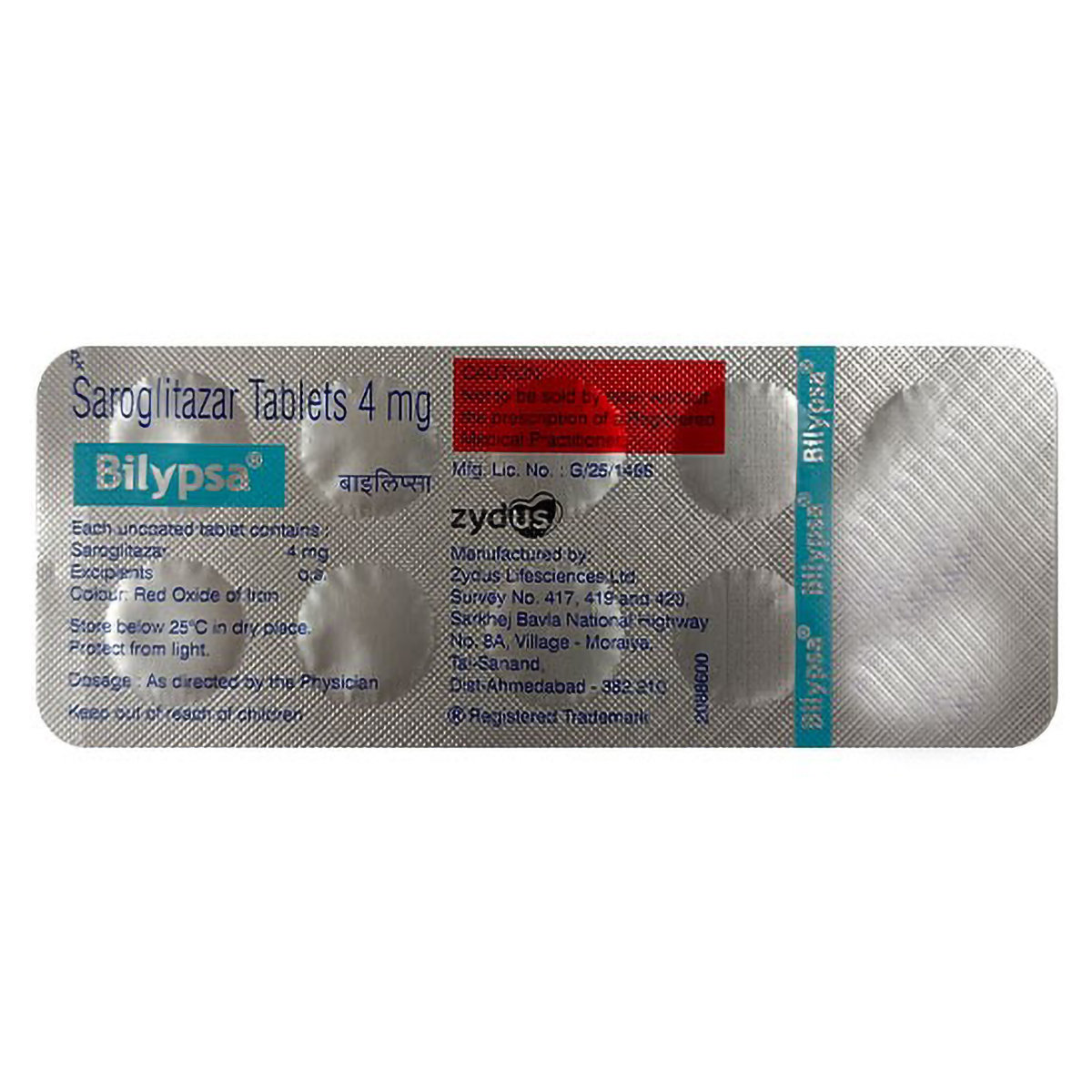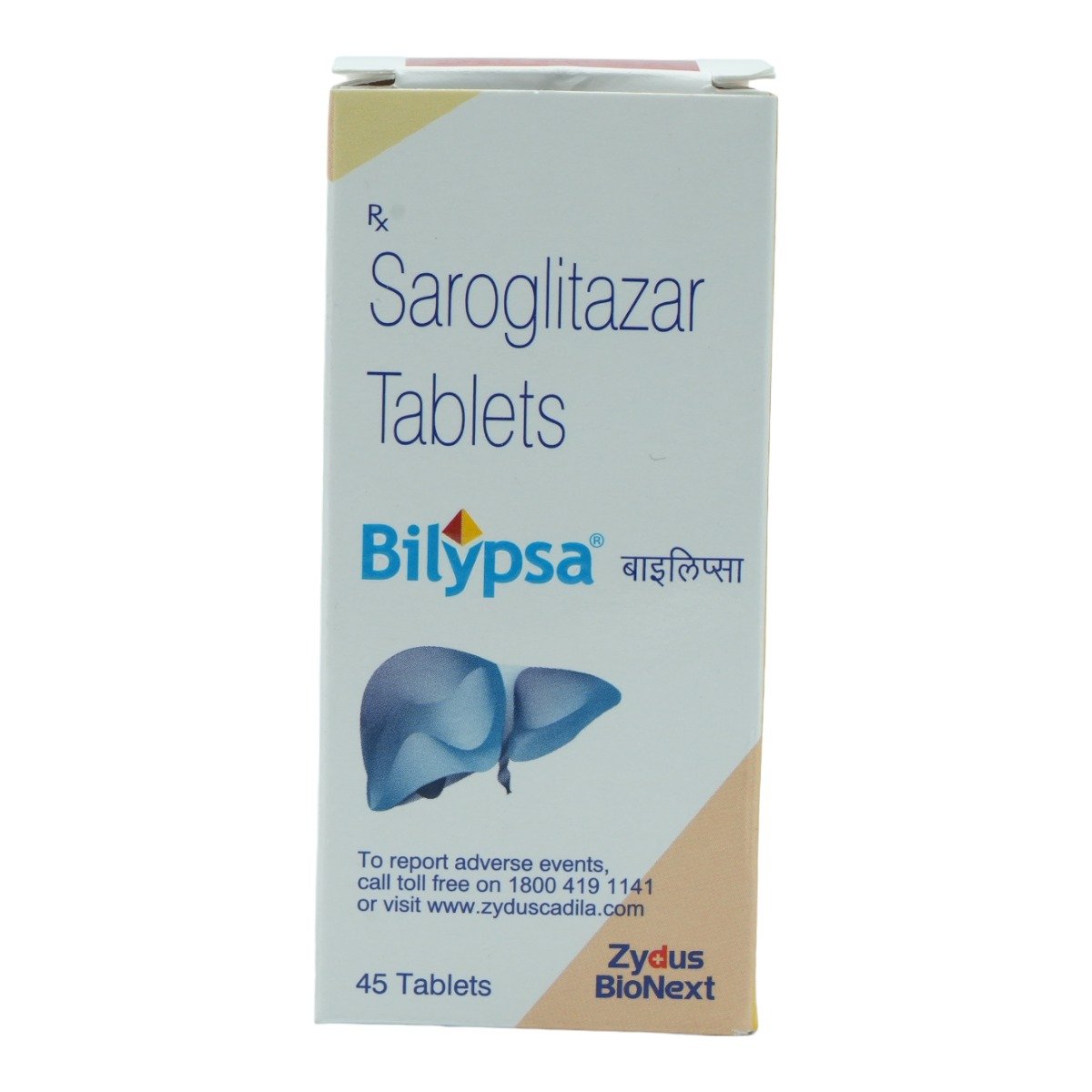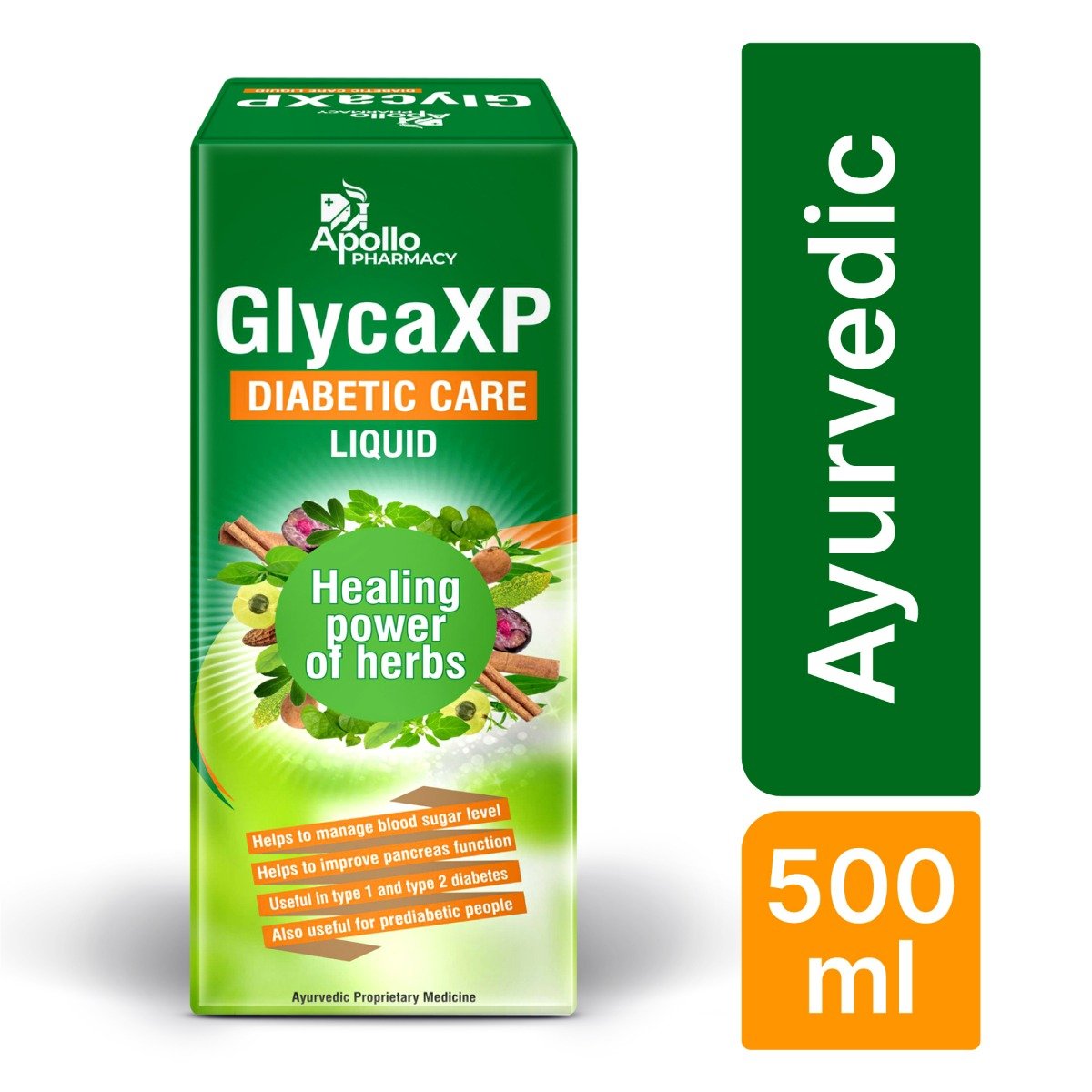Lipaglyn Tablet

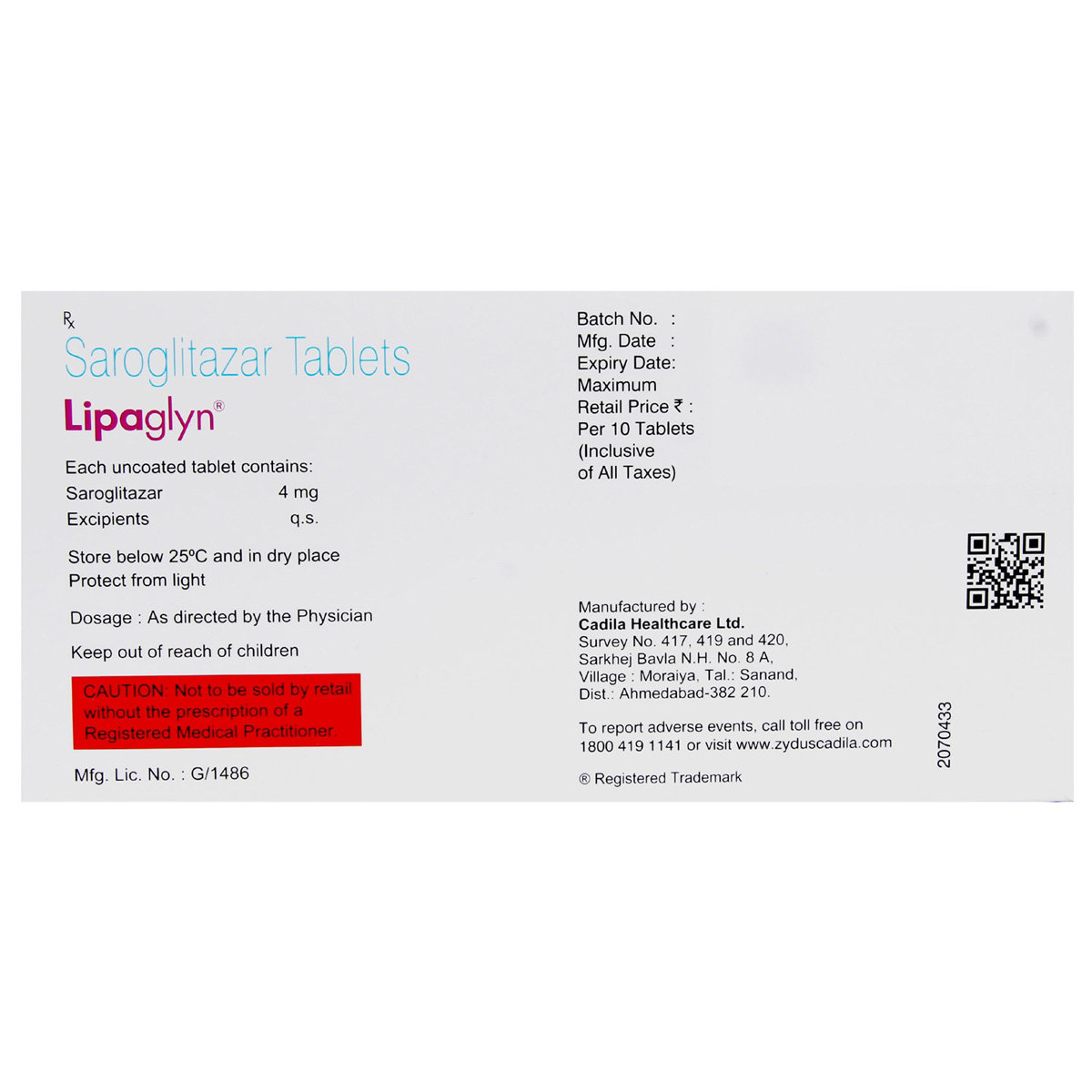
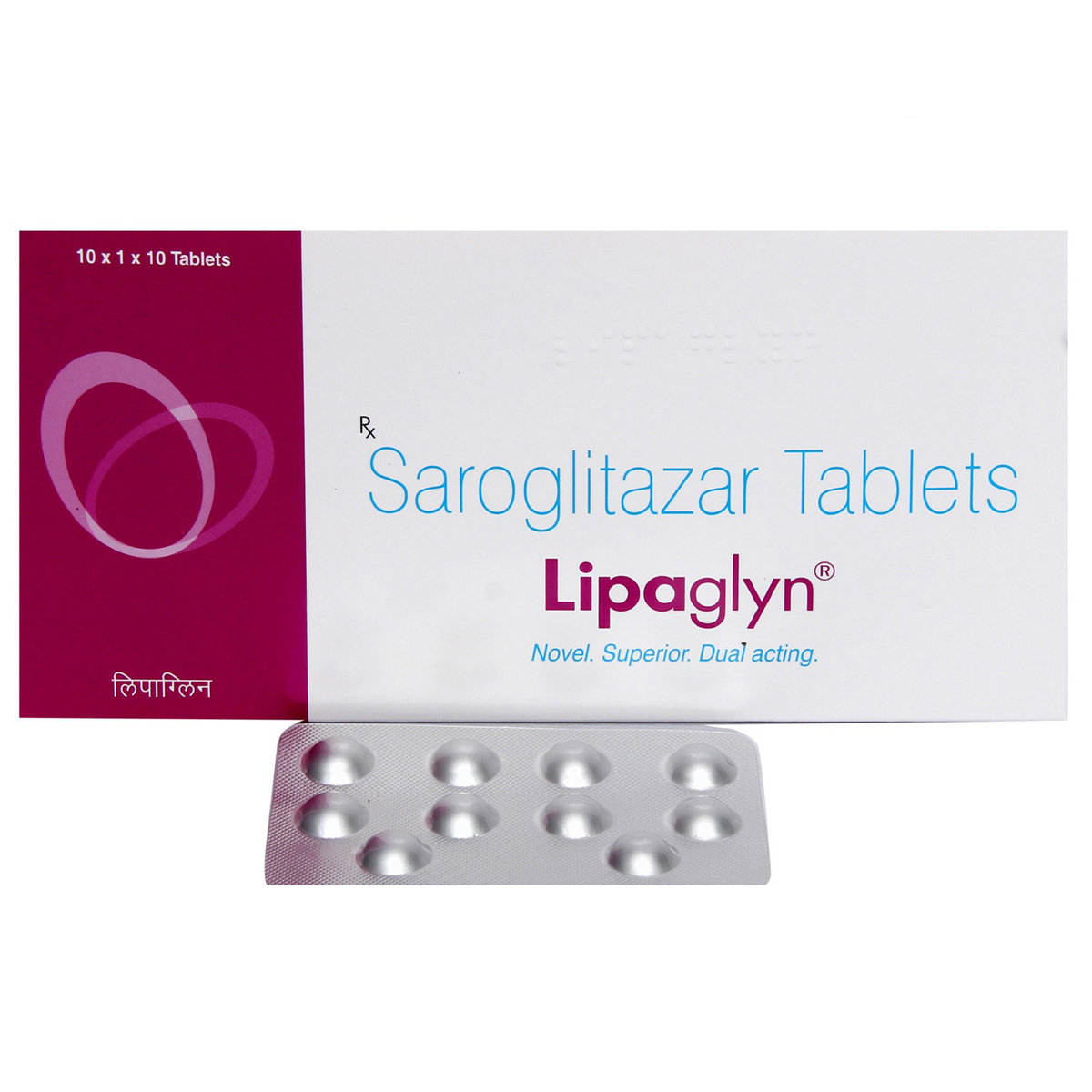
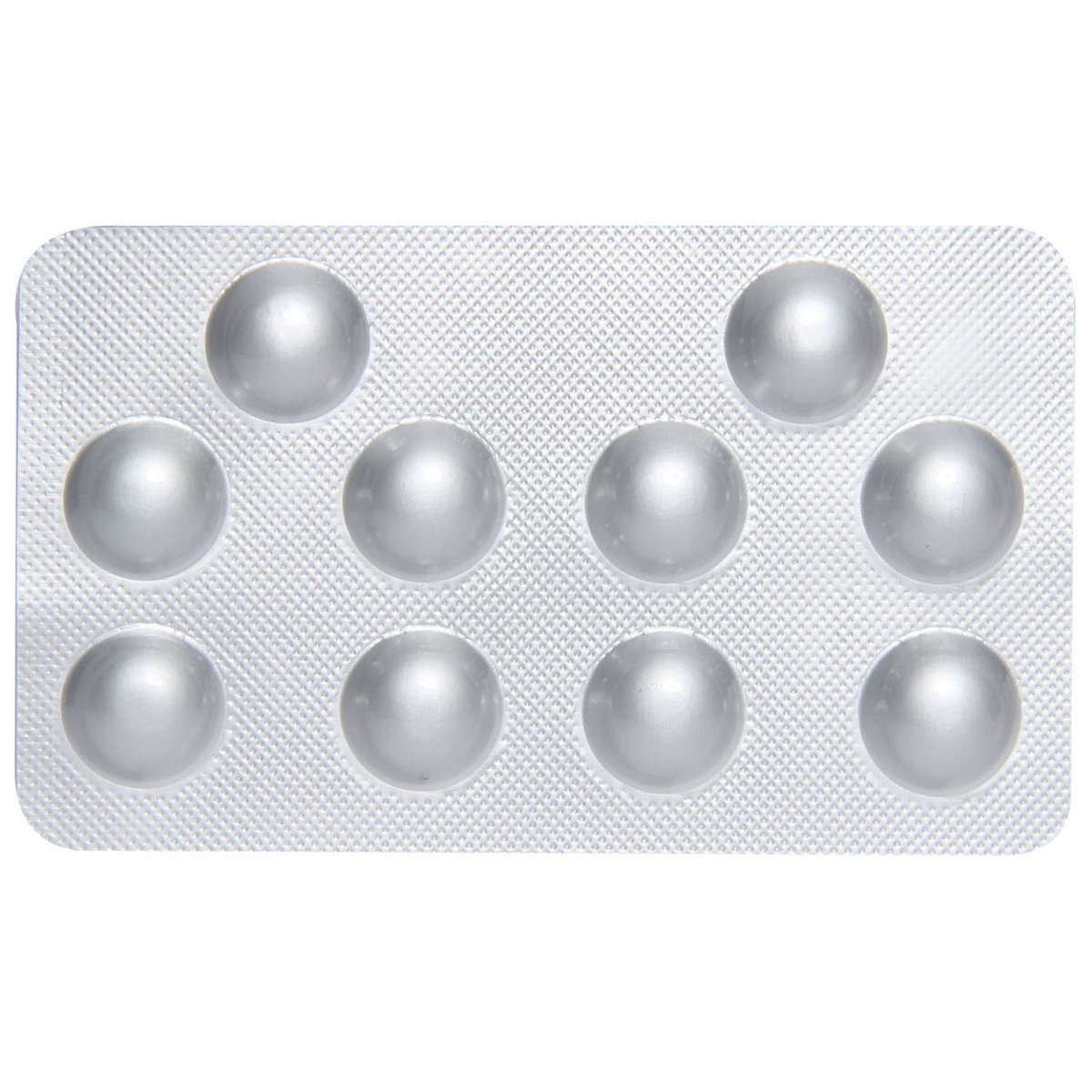
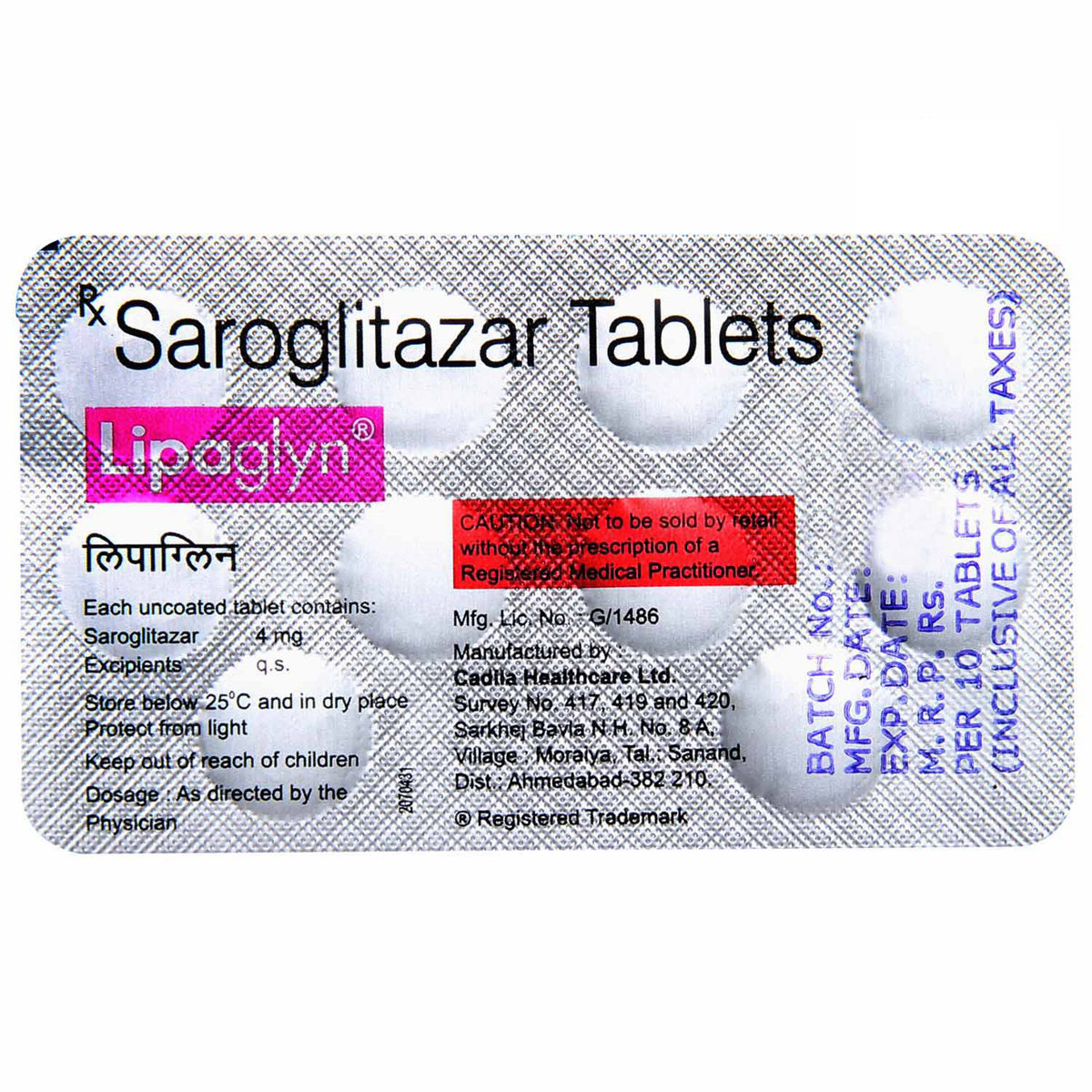

MRP ₹455.5
(Inclusive of all Taxes)
₹68.3 Cashback (15%)
know your delivery time
Provide Delivery Location
Composition :
Manufacturer/Marketer :
Consume Type :
Expires on or after :
Return Policy :

Secure Payment

Trusted by 8 Crore Indians

Genuine Products
Therapeutic Class
Country of origin
Manufacturer/Marketer address
Author Details
We provide you with authentic, trustworthy and relevant information
Disclaimer
Alcohol
Safe if prescribed
You are recommended to avoid alcohol consumption while taking Lipaglyn Tablet to prevent unpleasant side effects.
Pregnancy
Consult your doctor
Lipaglyn Tablet belongs to pregnancy category C. Consult your doctor before taking Lipaglyn Tablet if you are pregnant; your doctor will prescribe only if the benefits outweigh the risks.
Breast Feeding
Consult your doctor
Nursing mothers should avoid taking Lipaglyn Tablet as it is not known if Lipaglyn Tablet is excreted into breastmilk.
Driving
Safe if prescribed
Lipaglyn Tablet may cause dizziness. Therefore, drive or operate machinery only if you are alert.
Liver
Consult your doctor
Lipaglyn Tablet should be used with caution in patients with liver disease. Please consult your doctor if you have a liver impairment or any concerns regarding this.
Kidney
Consult your doctor
Lipaglyn Tablet should be used with caution in patients with kidney disease. Please consult your doctor if you have kidney impairment or any concerns regarding this.
Children
Safe if prescribed
Lipaglyn Tablet is not recommended for children as the safety and effectiveness have not been established.
Product Substitutes
About Lipaglyn Tablet
Lipaglyn Tablet is an insulin sensitiser used to treat diabetic dyslipidaemia/hypertriglyceridemia in type-2 diabetic patients, which is not controlled by statins (lipid-lowering agents) alone. Lipaglyn Tablet has both lipid and glucose-lowering effects in a single molecule; thereby, helps lower blood triglycerides and blood glucose levels. Diabetic dyslipidaemia is characterised by increased triglyceride levels, low-density lipoproteins (LDL) and decreased high-density lipoprotein (HDL) levels. This condition is common in people with type-2 diabetes mellitus.
Lipaglyn Tablet contains ‘Saroglitazar’, which has dual Peroxisome Proliferator-Activated Receptor (PPAR)-α/γ agonist having strong PPAR-alpha effect and moderate PPAR-gamma effect. PPAR-alpha reduces the synthesis and secretion of triglycerides, increases lipolysis and hepatic oxidation of fatty acids. It also induces an increase in the synthesis of HDL cholesterol. PPAR-gamma reduces the metabolic burden on the liver, muscle and promotes glucose utilisation. It improves post-absorptive insulin-mediated suppression of hepatic glucose output. Thereby, Lipaglyn Tablet helps in lowering blood triglycerides and blood glucose levels.
You are advised to take Lipaglyn Tablet for as long as your doctor has prescribed it, depending on your medical condition. In some cases, you may experience certain common side effects such as stomach inflammation, nausea, vomiting, weakness, chest discomfort, dizziness, and fever. Most of these side effects do not require medical attention and will resolve gradually over time. However, you are recommended to consult your doctor if you experience these side effects persistently.
Consult your doctor if you are pregnant. It is not known if Lipaglyn Tablet is excreted into breastmilk; therefore, nursing mothers should avoid taking Lipaglyn Tablet . Lipaglyn Tablet should not be given to children as safety and effectiveness have not been established. Lipaglyn Tablet should be used with caution in patients with kidney or liver impairment and in elderly patients. Avoid alcohol consumption while taking Lipaglyn Tablet as it might cause unpleasant side-effects. Lipaglyn Tablet might cause dizziness, so drive with caution. Inform your doctor about all the medications you are taking and your health condition to rule out any unpleasant side effects.
Uses of Lipaglyn Tablet
Medicinal Benefits Mweb
Key Benefits
Lipaglyn Tablet is an insulin sensitiser used to treat diabetic dyslipidaemia/hypertriglyceridemia in type-2 diabetes, which is not controlled by statins alone. Lipaglyn Tablet has demonstrated reduction of triglycerides (TG), Low-Density Lipoprotein (LDL) cholesterol, non-High-Density Lipoprotein (non- HDL) cholesterol, Very Low-Density Lipoprotein (VLDL) cholesterol, and an increase in HDL cholesterol. It has also shown glycemic indices by lowering the fasting plasma glucose and glycosylated haemoglobin in diabetic patients. Lipaglyn Tablet has dual Peroxisome Proliferator-Activated Receptor (PPAR)-α/γ agonist having strong PPAR-alpha effect and moderate PPAR-gamma effect. PPAR-alpha reduces the synthesis and secretion of triglycerides, increases lipolysis and hepatic oxidation of fatty acids. It also induces an increase in the synthesis of HDL cholesterol. PPAR-gamma reduces the metabolic burden on the liver, muscle and promotes glucose utilisation, and improves post-absorptive insulin-mediated suppression of hepatic glucose output. Lipaglyn Tablet has both lipid and glucose-lowering effects in a single molecule; this helps in lowering blood triglycerides and blood glucose levels as well. It also helps in improving insulin resistance. Lipaglyn Tablet offers a superior safety profile, greater efficacy on lipid regulation, and excellent glycaemic control.
Directions for Use
Side Effects of Lipaglyn Tablet
- Gastritis (stomach inflammation)
- Nausea
- Vomiting
- Asthenia (weakness)
- Chest discomfort
- Dizziness
- Pyrexia (fever)
Drug Warnings
Do not take Lipaglyn Tablet if you are allergic to any of the components. Inform your doctor if you notice rapid weight gain. Consult your doctor before taking Lipaglyn Tablet if you are pregnant. It is not known if Lipaglyn Tablet is excreted into breastmilk; therefore, nursing mothers should avoid taking Lipaglyn Tablet . Lipaglyn Tablet should not be given to children as safety and effectiveness have not been established. Lipaglyn Tablet might cause dizziness, so drive with caution. Avoid alcohol consumption while taking Lipaglyn Tablet as it might cause unpleasant side-effects. Lipaglyn Tablet should be used with caution in patients with type-2 diabetes having cardiovascular disease.
Drug-Drug Interactions
Drug-Drug Interactions
Login/Sign Up
Drug-Food Interactions
Drug-Food Interactions
Login/Sign Up
Drug-Diseases Interactions
Drug-Diseases Interactions
Login/Sign Up
Habit Forming
Diet & Lifestyle Advise
- Follow a cholesterol-lowering diet.
- Exercise regularly. It helps in maintaining proper weight and lowers cholesterol.
- Limit salt and sugar intake.
- Avoid smoking and alcohol consumption.
- Choose healthy fats and cut down on trans-fat.
- Include omega-3 fatty acids, fibre-rich food, fruits and vegetables.
- Get active by doing any physical activity such as swimming, brisk walking or jogging. Take stairs instead of elevators/lifts.
- Try eating food at regular intervals. Do not skip meals. Also, try not to overeat.
- Follow a healthy diet and walk for at least 45 minutes to complement treatment with Lipaglyn Tablet .
- Rest properly, avoid stress by doing meditation or yoga.
All Substitutes & Brand Comparisons
RX
Bilypsa Tablet 10's
Zydus Cadila
₹455.5
(₹41.0 per unit)
RX
Linvas Tablet 10's
Lupin Ltd
₹455.5
(₹41.0 per unit)
RX
Vorxar Tablet 10's
Torrent Pharmaceuticals Ltd
₹455.5
(₹41.0 per unit)

Have a query?
Buy best Diabetics products by
Torrent Pharmaceuticals Ltd
Sun Pharmaceutical Industries Ltd
Eris Life Sciences Ltd
Intas Pharmaceuticals Ltd
Lupin Ltd
Micro Labs Ltd
Mankind Pharma Pvt Ltd
Lloyd Healthcare Pvt Ltd
Alkem Laboratories Ltd
Abbott India Ltd
Glenmark Pharmaceuticals Ltd
Cipla Ltd
Macleods Pharmaceuticals Ltd
Wockhardt Ltd
Dr Reddy's Laboratories Ltd
Primus Remedies Pvt Ltd
USV Pvt Ltd
Aristo Pharmaceuticals Pvt Ltd
Emcure Pharmaceuticals Ltd
Alembic Pharmaceuticals Ltd
Ipca Laboratories Ltd
La Renon Healthcare Pvt Ltd
Ajanta Pharma Ltd
Medley Pharmaceuticals Ltd
East West Pharma India Pvt Ltd
Elbrit Life Sciences Pvt Ltd
Corona Remedies Pvt Ltd
Hbc Life Sciences Pvt Ltd
Sinsan Pharmaceuticals Pvt Ltd
Ranmarc Labs
Mitoch Pharma Pvt Ltd
Zydus Healthcare Ltd
Sanofi India Ltd
Akumentis Healthcare Ltd
Fusion Health Care Pvt Ltd
Unison Pharmaceuticals Pvt Ltd
Jubilant Lifesciences Ltd
Novo Nordisk India Pvt Ltd
Tas Med India Pvt Ltd
Blue Cross Laboratories Pvt Ltd
Msn Laboratories Pvt Ltd
Eswar Therapeutics Pvt Ltd
Indoco Remedies Ltd
Q Check Pharmaceuticals
Alteus Biogenics Pvt Ltd
Anthem Bio Pharma
Franco Indian Pharmaceuticals Pvt Ltd
Systopic Laboratories Pvt Ltd
Panacea Biotec Ltd
Zydus Cadila
Biocon Ltd
Edoc Life Sciences Pvt Ltd
Koye Pharmaceuticals Pvt Ltd
Arkas Pharma Pvt Ltd
Diacardus Pharmacy Pvt Ltd
Elinor Pharmaceuticals (P) Ltd
Remedy Life Sciences Pvt Ltd
Saan Labs
Talent India Pvt Ltd
Jarun Pharmaceuticals Pvt Ltd
Capital Pharma
Shrrishti Health Care Products Pvt Ltd
FDC Ltd
Leeford Healthcare Ltd
Nirvana India Pvt Ltd
Elder Pharmaceuticals Ltd
Eli Lilly and Company (India) Pvt Ltd
Glynis Pharmaceuticals Pvt Ltd
Zuventus Healthcare Ltd
Arrient Healthcare Pvt Ltd
Cadomed Pharmaceuticals India Pvt Ltd
Orris Pharmaceuticals
Akesiss Pharma Pvt Ltd
Bal Pharma Ltd
Biochem Pharmaceutical Industries Ltd
Knoll Healthcare Pvt Ltd
Lippon Pharma Pvt Ltd
Morepen Laboratories Ltd
Neucure Lifesciences Pvt Ltd
Opsis Care Lifesciences Pvt Ltd
Wallace Pharmaceuticals Pvt Ltd
Acmedix Pharma Llp
Converge Biotech Pvt Ltd
Erinyle Pharma
Indiabulls Pharmaceuticals Pvt Ltd
Ozone Pharmaceuticals Ltd
Retra Life Science Pvt Ltd
Alvio Pharmaceuticals Pvt Ltd
Geneaid Pharmaceuticals
Heal (India) Laboratories Pvt Ltd
Olcare Laboratories Pvt Ltd
Vasu Organics Pvt Ltd
Kotak Life Sciences
Lakshya Life Sciences Pvt Ltd
Proqol Health Care Pvt Ltd
Sanz Pharmaceuticals
Daylon healthcare pvt Ltd
Mcronus Lifescience Pvt Ltd
Natco Pharma Ltd
Orsim Pharma

Customers Also Bought
Recommended for a 30-day course: 3 Strips

_0.jpg?tr=q-85)

